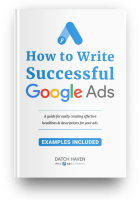Why?
Since creating a new one requires lots of time planning it out and it can be grueling work and for ecommerce brands it can be a hassle. Why would you go through the eye of the needle when you can all together avoid it?
Remarketing is a buzzword in the world of marketing and business, and it’s one of the effective ways to boost conversions for ecommerce brands. Take note remarketing is not a shortcut too!
If you’re thinking of trying out remarketing to your audience to achieve your goals as a company then you’re on the right track.
Need proof that remarketing is the real deal?
According to statistics, Retargeting on Google Display Network Reaches More than 90% of All Internet Users everywhere.”
Since Google is a popular search engine it’s only natural for most queries to be held on Google which means it’s a great platform to do retargeting of website visitors.
Another statistics shows that “161% Conversion Rate Rise From Google Remarketing Campaigns.”
No kidding, this is not bullshit!
When I say that remarketing is really really effective let this data sink in. Ecommerce brands like you are probably constantly running ad campaigns and you should know why ad campaigns are essential for the advertising world on Google.
If you’re still not yet sold about remarketing let these brands be an example to you.
Heard of Nike?
Of course you did, it’s impossible for you not to know this brand. Nike’s website has over more than 2 million visits and people buy their products there. One of the main reasons? They use remarketing strategies and a strong CTA to optimize their efforts.
How about Airbnb?
If you go to their facebook they have listings and remarketing efforts on their feed. So travel junkies can check out their website on Google and notice that they are being remarketed on Facebook.
Remarketing can also be done on social media such as Facebook to reach out to audiences that are no longer browsing on Google.
There are many giant companies or ecommerce brands that are using remarketing to sustain their business, add traffic and boost conversions. So why wouldn’t you try this marketing strategy online?
In this post I’m going to explain to you thoroughly how remarketing is a great strategy for ecommerce brands like you and why you should start implementing this as soon as possible.
What is Remarketing?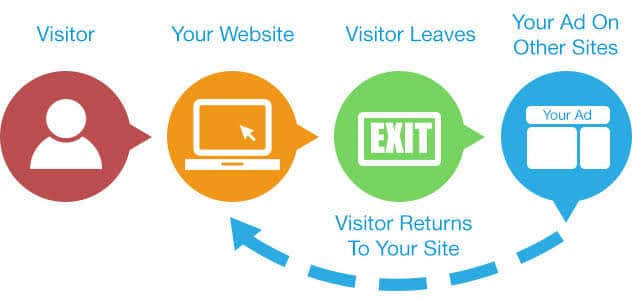
One of the critical marketing strategies that you need to know as an ecommerce business owner is remarketing. Remarketing is the process of re-engaging customers, who have left your site without purchasing a product from you or who have encountered your brand.
Remarketing can also be defined as advertising more than once to the same person. There's this Rule called the Rule of 7, which means that people are most likely to buy from you if they have seen your ads or brand for at least 7 times.
In simpler terms, it's pretty much like wooing people to buy from you or get to know your brand. Realistically people who visit your website or ecommerce site are less likely to buy from you for the first time. The psychology behind these shoppers' behaviour can be broken down into one question. How much do they know you?
So if you're pretty new in the field, chances are people don't know your brand and are looking for options around the web on what to purchase. They probably clicked your ad which led them to your site.
To fully understand why shoppers do this requires a ton of data analytics, tools and in-depth research. We're going to briefly touch base on that later as we go on the remarketing strategies.
Trust and familiarity are the two factors that make a customer buy from you. It can take time before your brand to get eyeballs or build relationships from customers. Still, with the right remarketing strategies, you can introduce your brand and products to the people who already engaged with your brand.
Here are two examples of remarketing that I can show you.
The first example is this: imagine seeing the same old billboard about advertising a specific promo on jeans every day on your way to work. Then one day, your jeans no longer fit you. So you remembered that brand on the billboard since it sticks with you. That is one way of remarketing and the Rule of seven for you.
Second is, for example, a customer went to your ecommerce site and failed to make a purchase for whatever reason that he or she has. Most likely, the customer is looking for affordable options. Or the potential buyer has completely changed his or her mind in buying at all.
You can still remedy that by remarketing, and You know cookies, right? Well, not the delicious goodies but rather the one that pops up on a website saying collecting your browser information?
That my friend is a piece of computer coding that helps websites track your website activities to implement retargeting on you.
Wait what?
Retargeting, I thought you said the two are not the same thing.
Well retargeting using ads to target a specific person with ads, technically following them around on the websites that they visit.
For example, that customer is reading an article, and they are ads around that article, right? He or she will see your product or brand ad on that news article if it's related to that article. The cookies help track your consumer's web activities without hacking privacy and gathering sensitive information. That is a big no, no.
The main goal of remarketing or retargeting is to show ads again and again to a customer until they decide to make a purchase, kind of persuading them multiple times to buy the product.
By using ads on the web, you'll be able to remarket the specific product that they have left on their carts or viewed on your site.
What is the difference between Remarketing and Retargeting?

Remarketing and retargeting are both used interchangeably by marketers, but the two are not the same thing. They may have the same goal, which is to re-engage customers with ads to boost conversions.
Retargeting is a subset of remarketing so to explain it further.
It's like digital marketing.
The realm of digital marketing is broad and has many categories, but to non-marketers, they think that digital marketing is like social media marketing. Posting on social media networks and since it's digital, it's already digital marketing for them.
Remarketing is by using email and Sms, and it's mostly limited to that
While retargeting is using ads or web traffic to follow customers who have already visited your site but weren't able to complete a purchase.
Remarketing works with people who have:
⦁ Visited your ecommerce site
⦁ Visited your app
⦁ encountered your brand
Why is it important for Ecommerce?
Remarketing is one of the basic foundations of marketing, and it's not like it hasn't happened before. Remember those product infomercials or demos that were constantly replaying all night on your TV? That is a form of remarketing.
How about on the radio? If you noticed radio ads are repeated continuously after an hour or more, depending on the advertisers budget.
In short, remarketing has been a foundation of marketing long before the web has been born.
Now that we're all using the web, ecommerce business owners like you need to utilize remarketing just like any marketing strategies that will be beneficial for your ecommerce store.
Here are the reasons why Remarketing is essential and why you should do it.
⦁ Increases sales
⦁ forges relationship with cold customers
⦁ Goes straight to the funnel
⦁ leverage on conversions/leads
⦁ enhances creativity on remarketing
⦁ increases content creation for remarketing
Goals in ecommerce remarketing strategies
In this post, we're going to tackle the goal of boosting conversion and how remarketing can help ecommerce business owners like you.
The main goal of remarketing is to remarket to the people who visited your site for at least a minute is to follow them around with ads.
It's kind of like cyberstalking, where you'll follow them around with your ads that will make them purchase their desired product on your site.
Kind of like an obsessed lover who chases people hoping to make them fall in love with your products except you don't want to look desperate, right? There are goals and strategies that you can do to remarket.
Remarketing or retargeting whatever your strategy is highly effective since, according to a survey, it can lift ad engagement rates to 400%. The average click-through rate (CTR) for display ads is 0.07%, while the average CTR for retargeted ads is about 0.7%.
Before we dive in the different types of remarketing that you can do to chase down customers.
Ask yourself what the goal of doing this is? What's the motivating factor? Then try to put yourself on your customer's shoes, understand their behaviour and brain. If you want to persuade them, then you better get into their heads.
Seventy per cent of people have a higher chance of converting when they're being retargeted.
So why would you pass on this strategy when this is one of the most effective ways of increasing conversions?
Types of Remarketing that you can do:
⦁ Google Remarketing
⦁ Facebook remarketing
⦁ Youtube remarketing
⦁ Gmail Remarketing
⦁ Remarketing lists for search ads (RLSA)
⦁ Dynamic Remarketing
Google Remarketing– Google has always been on the top when it comes to online advertising, so it's not a surprise that they even have a remarketing strategy that you can use.

If you're already using Google for your other ads campaign, then all you have to do for Google remarketing is to add a piece of computer code or tracking pixels which keep track of customers who leave your site on the web.
This piece of code allows browser cookies to pop up and, it's not illegal, and the data privacy of consumers are still intact. The cookies help create an audience persona of some sort for marketers to have an idea about that person. And how they can use that data in their remarketing efforts or remarketing ads.
Later I'll explain to you in-depth how you can set up your Google remarketing strategy.
Google remarketing vs Dynamic remarketing
Google remarketing shows your past visitors ads whenever they visit the partner sites of Google display network on the web. While dynamic remarketing shows the specific product that your former visitor showed interest in, like the product that they abandoned on their cart.
So the main difference is that dynamic remarketing is specific and shows the product to that past visitor directly.
⦁ Facebook Remarketing
Facebook is best for paid social or advertising via social media, same as Google you can do remarketing on Facebook by showing ads that your past visitor has seen on your site. You can also pixel the visitors of your site, as long as they are logged in on their Facebook accounts, ads will retarget them.
⦁ YouTube Remarketing– If you want your video ads to convert then YouTube remarketing is right up your alley. With video ads, Google has made remarketing more visual ads. Once a visitor visited your YouTube channel, you can remarket to them by doing YouTube remarketing to help boost conversions.
⦁ Gmail Remarketing– Google just released the Gmail remarketing campaign that marketers can now use. You can use email nurture programs to do this type of remarketing. It's one of the great ways to capture or remarket to visitors of your site.
⦁ Remarketing Lists for Search Ads (RLSA)
You can remarket to visitors by customizing your search ads campaign, and you can tailor your bids and ads to capture them. This is common for ad campaigns such as Google Shopping, Dynamic search ads campaign and more.RLSA also uses cookies to tailor your search ads that will remarket to your visitors.
Other Remarketing strategies you can do:
There are many remarketing strategies that you can choose to boost your conversions. Why don't you plan and strategize and figure out which methods work well for your remarketing campaigns?
⦁ Utilize remarketing code as much as you can
There are numerous ways you can implement remarketing code in your campaigns, and here are the examples. You can target those who already viewed an instructional content on your product on YouTube since they already learned about your product. For your homepage target, your website visitors that clicked your website through an organic reach or an ad.
⦁ Install multiple remarketing tags
You can send out multiple remarketing tags to various prospects if that is your main goal. The pros are that you're multitasking and reaching a wider audience all at once. The cons are that it requires a lot of effort, time and money.
⦁ Upsell or cross-sell
In remarketing, you can upsell or cross-sell to your targeted audience. But beware of overdoing it. Be strategic on offering certain products that are based on the products they have added to their cart or viewed on your site.
⦁ Hire a company to do the remarketing campaign
It's okay if you couldn't do all the work when it comes to remarketing. Not only is it a heavy workload, but it can also hinder you from doing other important daily operational activities for your ecommerce business.
Contact a reputable digital marketing company that can handle the remarketing campaign that will ease your responsibilities and keep you on the loop.
⦁ Do an A/B testing.
You can utilize Google Analytics to find out which remarketing ads are working for you. There's no such thing as a cookie-cutter kind of remarketing campaign. Making tweaks can help you find the right ads campaign that will work for you. Study the results on Google analytics and use it as a reference for your testing.
Product catalog
If you're using Google shopping feed app then you'll be able to manage your merchant feed for shopping ads, the products will sync with the Facebook catalog.
Facebook will grab the data it needs to run dynamic ads that will retarget people that have been on your website before. Facebook ads allow you to use lookalike audiences that are based on the interests of your audience. The data and analytics can help you retarget people effectively.
⦁ Use promos and discounts
Promos and discounts have been around for a reason, and it's best if you can offer great promos that are hard to pass by. Presenting them with irresistible offers can make remarketing to people a success.
You can offer them on a limited time or a dollar promo depending on your niche and products. It's one of the effective ways to get people back on your website. Be wise and smart about giving promos and discounts without sabotaging your business.
⦁ Customize email retargeting campaigns
The email has long been an effective way to generate sales and a means of communication to their customers. You can customize email marketing efforts with a customized style of writing.
For those who subscribe on your mailing list, this is an excellent opportunity for you to send out emails that are targeted to them. You can segment it by their profile and other data that you have collected about them. Make it personal and engaging for them to read the email you sent them.
⦁ Balance things out
Balance is the key when doing retargeting or remarketing to your prospects. The last thing that you want to do is annoy them with the following ads that they see around the web. Or better yet overwhelmed them.
This will give them a negative impression of your brand on that part. Not only is it expensive to do retargeting ads, but it can also piss off customers. So balance is the key, learn when to stop running ads that are not working for you.
⦁ Segment your audience
You want to create a list of people you want to target to segment your audience and run your remarketing ads campaign. You can create a category to separate the people you want to target with potential buyers, not potential buyers, converters/buyers.
You can do that by using Google's paid search audiences. Google ads will help you analyze and know more about your audience based on what the data they got from your audience.
As much as possible, avoid remarketing to those who are not potential buyers or those who don't give a shit at all. Since you'll only waste money, time and ads on them. Better yet pick those who are potential buyers and sure converters that will buy from you.
Prioritize those people who will increase your sales and be loyal fans of your products in the future. Segment the audience based on their interests and how they interact with your brand. You can cater to their problems and also help them out on their buyer journey.
Target everyone that already engaged with your products from adding products to their cart, downloaded your eBook, clicked your website and more. It'll be a long list, but this can give you options to weigh who is worth the chase.
⦁ Tailor ads to specific demographics
You don't want to retarget everyone and everywhere. This can be a messed up way of wasting your money and decreasing your chances of conversions and ROI.
Plan it out and specify demographics that you want to cater your products to. For example, you're an ecommerce site selling books, and you want to target ages 18-50 those who love to read books, either eBooks or physical ones.
⦁ Be engaging
Don't bore people with boring ads, be engaging by using creative banner ads that are eye-catchy and put their desired product front and center. It's about sending them a clear and strong message of reaching out to them without annoying or overwhelming them in the process. You don't want your brand to look spammy so tell a story while you're at it.
⦁ Retarget those customers who have made tripwire sales or mini conversions
You want to keep the attention of your customers by keeping them interested in what you offer. Make the purchase valuable or worth it by adding a free shipping offer or other freebies depending on your products. It can serve as a reward system for the customers, which can be a win-win situation for you and the customer.
Schedule retargeting efforts
You should choose the right timing when doing remarketing on your targeted audience. You can give a 15 -30 days grace period before remarketing to them depending on your goal. Don't retarget them too soon or too late.
You can jazz up your products to them by offering them a limited-time sale or discount. Take the time to create ads that are engaging for the targeted audience too.
How to do Google Remarketing:

Here is the step by step process you can follow for setting up a Google Remarketing ads campaign. It's simple and easy to do especially if you're already familiar with Google Ads.
STEP 1

If you already have a Google Ads Account, sign in there
STEP 2
Once you see the campaigns from the page menu click it
STEP 3
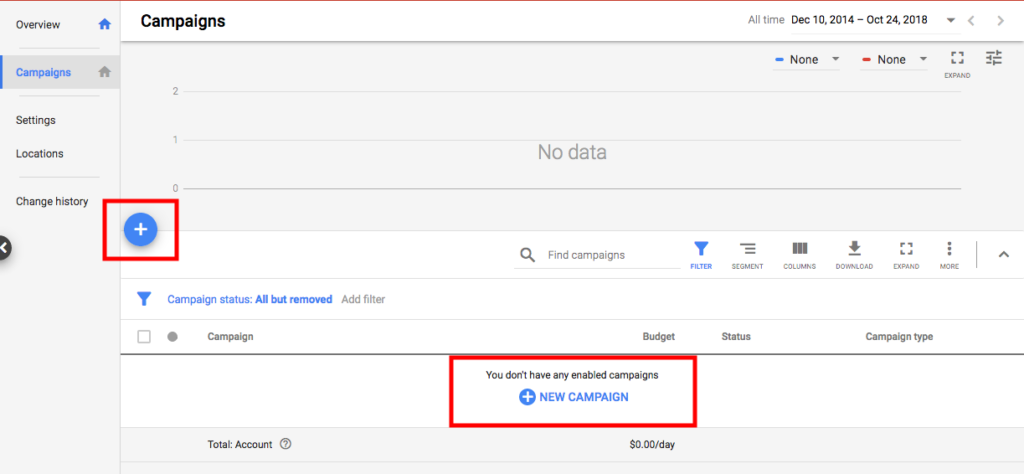
There's a plus button that you can see, click it to add a new campaign
STEP 4
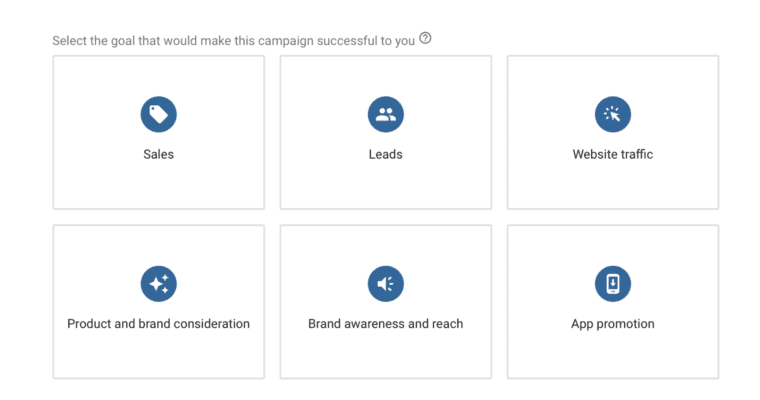
There's a “Goals” section, click the goal that's fit yours
STEP 5
On the Campaign type section, click, Display Network
STEP 6
You have to set the parameters of your campaign based on the campaign name, location and language settings, bid and budget. Once you're done, it's time for you to check the information if correctly inserted.
STEP 7: Select the Additional settings if you want to see other customized information such as ad scheduling, content exclusions, or device targeting.
STEP 8
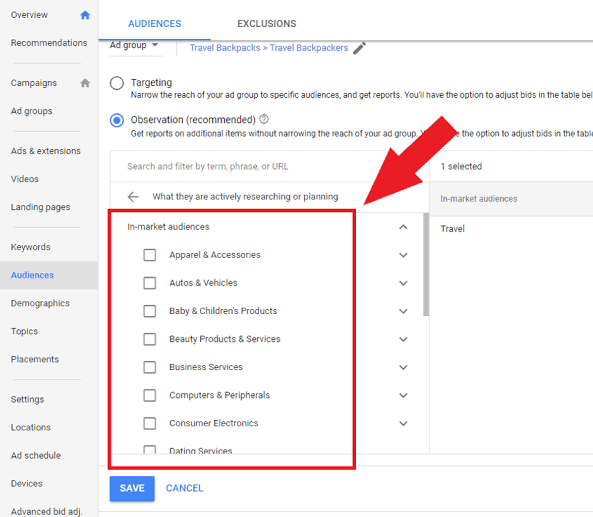
Look for the “People” section and select “audiences” then click remarketing.
STEP 9: There's a checkbox near the audiences you'd like to add, check it to include them.
STEP 10: Click Save, and you're good to go.
How to do Facebook Remarketing:
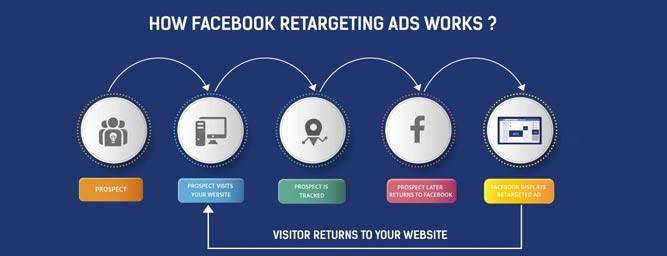
Here is the step by step process you can follow for setting up a Facebook Remarketing ads campaign. It's simple to do especially if you're already familiar with the social media network.
STEP 1
Go to you Facebook Ads Manager if you already have one then log in. On the Business Manager section, you'll see a drop-down menu when you click it. Then select Audiences.
STEP 2

Click on Create Audience then select Custom Audience.
STEP 3
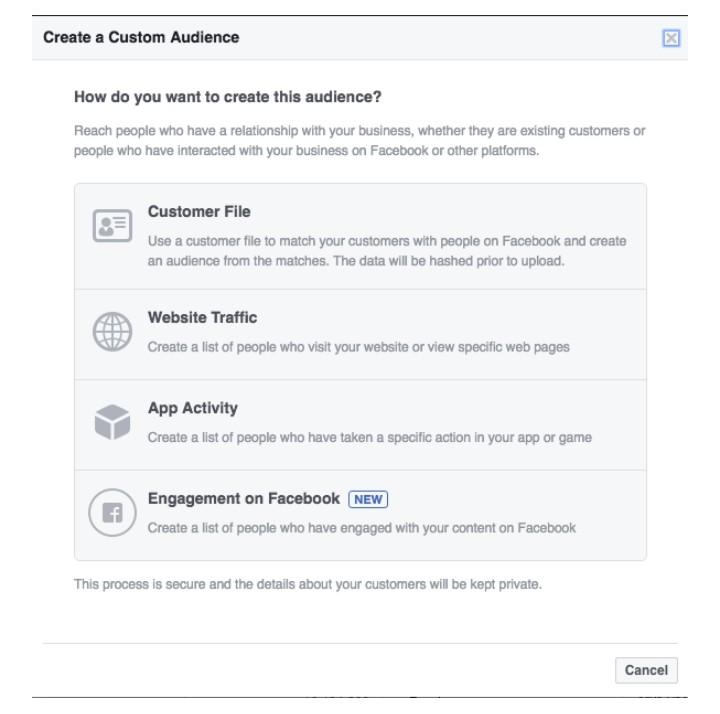
Select Website Traffic then choose among the options. You want to target people that will visit your site.
STEP 4
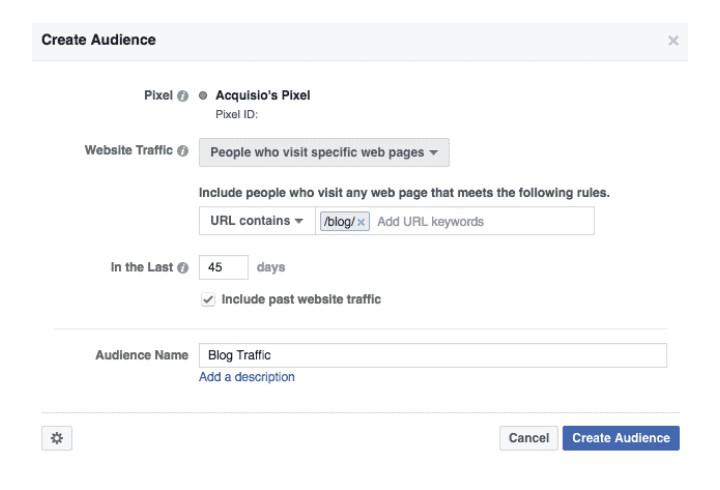
Select your target audience, which allows you to create an audience then segment or target.
STEP 5

Get your pixel code and install it on your website to track people that will visit your site.
It's still your decision on what platform you will choose for remarketing to your audience. Google and Facebook are big tech companies that are great for doing strategic and effective remarketing.
Since you're an ecommerce store owner, then you already know how effective these two platforms are when it comes to online advertising.
You can either separately do campaigns on them or complement each other if you have enough budget to run campaigns on Google and Facebook Remarketing ads campaigns. There are many ways for you to do remarketing as shown to you on this post and It's still your call!
Best practices for Remarketing:
Here are the best practices that you have to take note of when doing remarketing.
Use Onsite Optimization
It's not always about retargeting a potential customer when they leave your site. You can do onsite retargeting by targeting them during their browse on your ecommerce site.
You can use an exit pop up campaign that will appear when they'll be leaving. You can use promos or offers as they go along with your site. It's about keeping them interested when they're already on your website.
Import Analytics into AdWords
Analytics is vital for you to have plenty of data to study and work on. Google Analytics can be linked with your analytics account with AdWords. This will help you keep track of your data and see if things are going well for your goals as an ecommerce business owner.
As they say, information is power and use the gathered information to boost your remarketing efforts and tweak them whenever you need to.
⦁ Use UTM parameters
UTM parameters are also known as UTM codes that are a snippet of text added at the end of your URL, these pieces of codes help you track in Google Analytics. You'll know what the high-performing ads and highest Click-through rate on your site are.
It's the same as Google Analytics, but it provides you with much in-depth data. You must know what the essentials to have a successful remarketing campaign are.
⦁ Switch your ads up
Don't show the same old banner to your retargeting audience, and it can over fatigue them for seeing the same old thing every single time. Switch things up and make your banner ads or any ads creative and compelling whenever you can.
If you think it'll be time-consuming to create engaging banners for each targeted audience, You can use Banner Snack for quick and professional banner creation.
⦁ Set a Frequency Cap
Choose an optimal frequency cap to limit the number of times you show your ads. Setting a frequency cap also helps you not waste your budget when making remarketing efforts.
⦁ Don't forget about the other customers
It's easy to get caught up in the thrill of the chase, don't forget to target your old customers with promos and offers. After all, they are already loyal to your products and brand. It's a matter of balancing things out and knowing who your priority is
⦁ Use a strong CTA
Ah, the classic Call to Action, you can never underestimate the power of words to entice a potential customer. Call to Action statements makes the marketing campaigns clear and effective. You want to tell your site visitors about what to do and how they should do it. Call to action statements or copies are essential for any marketing efforts, whether traditionally or digitally.
⦁ Don't rely on remarketing too much
Do remarket but don't let it consume you in the process, test the waters and set a time limit when doing remarketing. There are other strategies that you can do to boost conversions aside from remarketing.
After all, remarketing efforts are expensive, and you don't want to drain your ecommerce budget. If remarketing is not giving you the results that you wanted either hire someone to do it or give it a go a second time before moving on.
⦁ Understand buyer's psychology
Get in the heads of your customers if you want them to purchase from you. Know what they want and who they are, cater to them whenever you can. Take the time to study their buyer persona and use the information that you have gathered for changing or boosting your remarketing efforts.
⦁ Segment by geographic location
Strategize your remarketing efforts by considering what locations to retarget and where your potential buyers can be residing it. Think also where your products are most needed. For example, you sell sweaters, pick the locations that are colder and retarget those who live there.
PROS AND CONS OF REMARKETING:
Here are the Pros and Cons of Remarketing you might want to consider.
PROS
- Highly effective
Remarketing is one of the effective ways of boosting conversions of a customer gone cold. It has been happening in the marketing world before Google was even born.
About 70 per cent of converting customers came from remarketing, and that's why marketers swear by the effectiveness of this marketing effort. It's worth trying when ROI or sales are low for your ecommerce site.
- Easy
Remarketing is easy if you use the right platforms or tools to do that. There are many remarketing ads campaigns that you can try from Google, Facebook, YouTube, Gmail and more. All you have to do is see which one will work well for your brand and products although the majority of marketers does Remarketing on the web or Google remarketing since Google has billions of views in a day.
- Create value for potential customers
You got to give your customers a valuable offer or product in the process of remarketing or retargeting. It's all about them and not your brand. Remember what the adage says, “The customer is always right”, and whenever customers leave your site without purchasing or checking out. You got to step up and find the reason why.
- Can complement other marketing initiatives
Remarketing is a great way to complement other marketing efforts of your ecommerce site. Just don't overwhelm your customers and yourself by doing all things at once. Take it one step at a time, run marketing campaigns that do-able and with realistic goals.
- Segmentations help you tailor ads
Segmentations are essential, and you should not ignore it since it can help you to determine who's and what of your remarketing campaign. You can tailor ads for certain demographics based on their location or interests, and it makes your ad engaging and human.
- Customizable
Remarketing is customizable since you can use the segmentation of your audience to do so. You can either use video, text-based, banners and more to do remarketing efforts on your potential customers.
- Opportunity to upsell or cross-sell
Whenever you're doing remarketing, you have the opportunity to upsell or cross-sell to your audience. This golden opportunity can help them change their minds and going back to your site is already a big win for you.
- You can control it.
You can set a limit on your budget, time and frequency cap with your remarketing efforts. You can control the creativity flow of the campaigns and limit those that are not working well.
CONS
- Can annoy people
One of the biggest problems of remarketing is that it can piss people off and that is precisely the last thing that you want as a business owner. Not only can it damage the reputation or impression of your brand, but it can also make you lose customers forever all together if you're not careful. Don't push your luck by continually bombarding them with ads all the time.
- Expensive
Google remarketing efforts can be costly, and that is a dark side of making remarketing efforts. PPC practitioners have been finding ways to limit ad spend for this marketing initiative. There's no harm in trying it out as long as you limit your budget and bid competitively.
Google has always been costly when it comes to online advertising but for a good reason since they are top-notch on the field. That's why bid and set budget wisely and strategically for optimum performance.
- Can look like a fraud or spammy
Banners can look fishy for customers, and you don't want to doubt your brand for ads that are following them around. Make sure your ads, whether banners or text-based look legit and more than empty promises. Make them trust your brand by your ad content.
CONCLUSION:
Remarketing to boost conversions, sales and ROI is not a bad thing. Many ecommerce sites and social media moguls are using remarketing to keep their businesses up and running. You can't let remarketing efforts go to waste by not trying it out or not running it properly.
Learning when to draw the line in remarketing can be tough. Still, it's essential for your business, there are pros and cons when it comes to remarketing, but then the majority of the results have been positive for business owners of all industries.
Adjusting to doing a remarketing campaign can take time, but once you're already up and running, you'll see how remarketing can work wonders for your ecommerce business.











